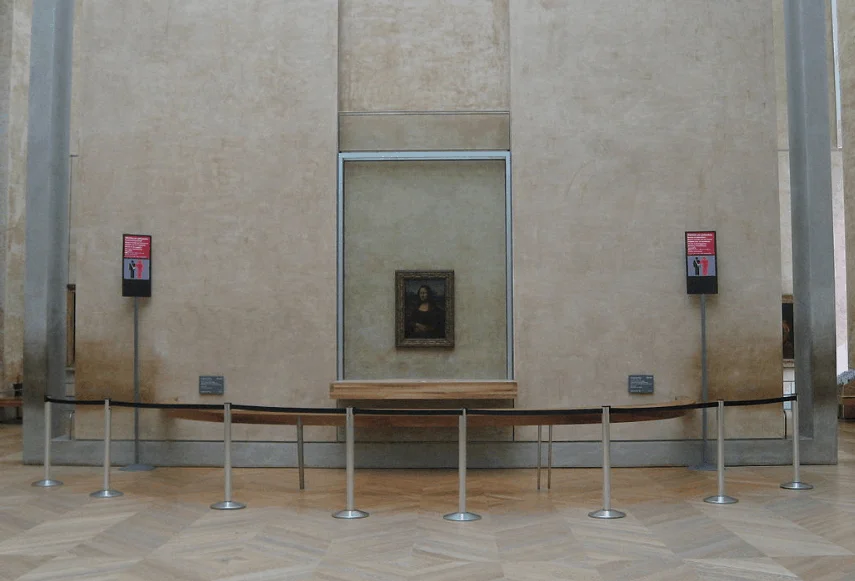It’s the most famous painting ever created. Alluring and enigmatic are some of the hundreds of words that can be used to describe this masterpiece.
Today it hangs in the Louvre Museum as one of the most valuable pieces of art ever created.
In this post, however, we’ll dig a little deeper and present you with the ultimate list of facts about the Mona Lisa painting.
1. Who created the Mona Lisa painting?
The Mona Lisa was created by the Italian artist Leonardo da Vinci (April 14/15, 1452 – May 2, 1519), who was born as “Leonardo di ser Piero da Vinci.” da Vinci was a true polymath who had incredible skills and knowledge in numerous subjects.
Some of his areas of interest and expertise included invention, drawing, painting, sculpture, architecture, science, music, mathematics, engineering, literature, anatomy, geology, astronomy, botany, paleontology, and cartography.
He’s not just responsible for creating the most famous painting ever, he also created:
- The most reproduced painting in the world, “The Last Supper.”
- A world-famous cultural icon, “The Vitruvian Man.”
- The work of art that sold for the highest price ever, “Salvator Mundi.”
He is widely considered to be the epitome of the “Universal Genius” or “polymath,” a term described for the first time by German philosopher Johann von Wowern as:
A person who has knowledge of various matters, drawn from all kinds of studies, ranging freely through all the fields of the disciplines, as far as the human mind, with unwearied industry, is able to pursue them.
He was the polymath of the Renaissance, a period in history that marked the transition from the dark middle-ages to modern times spanning the 15th and 16th centuries.
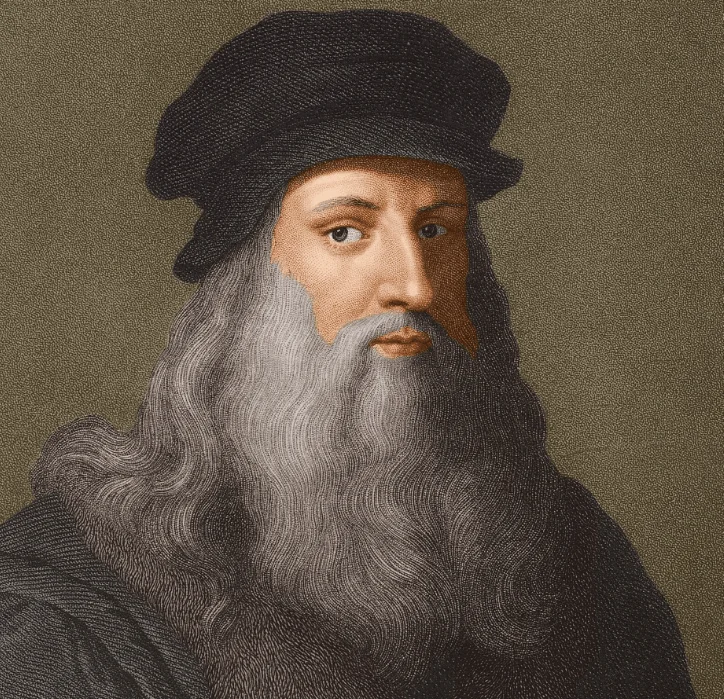
2. Who is Mona Lisa?
Who is the woman depicted in the most famous painting in the world?
The real name of the woman in the painting is Lisa del Giocondo, who was born Lisa Gherardini (June 15, 1479 – July 15, 1542). She came from a wealthy family and lived in the Italian city of Florence.
The painting is believed to have been commissioned by her husband, Francesco del Giocondo, a cloth and silk merchant who married Lisa when she was still in her teens.
Together the couple had 5 children and they lived a relatively comfortable life in the late 15th and early 16th century in Florence, Italy, which was then one of the biggest cities in Europe.
This also explains why not much is known of her life, which is in great contrast to the fame that her portrait acquired over the centuries.
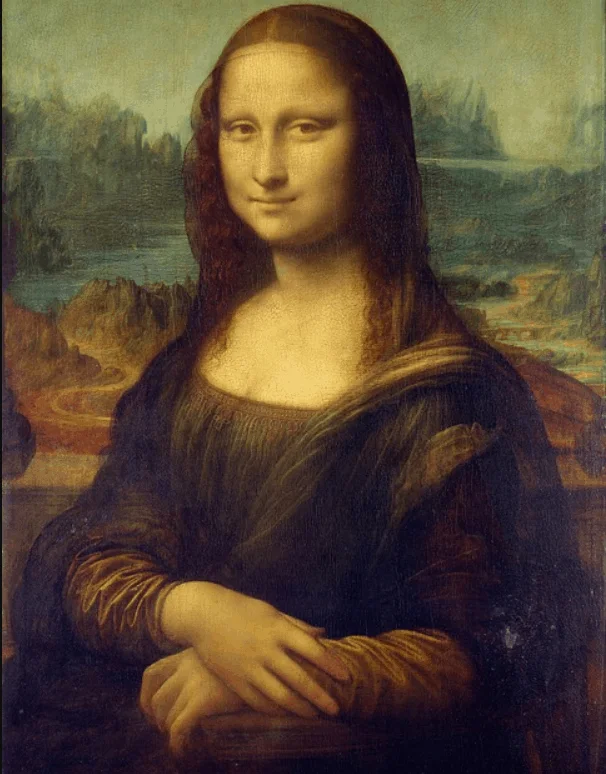
3. The identity wasn’t sure until 2005
For centuries, historians have wondered about the true identity of the woman in da Vinci’s famous painting. Lisa del Giocondo has always been the most possible candidate as there were references to her in later publications, but the question remained open for discussion.
It wasn’t until May 2005 when a manuscript expert named Dr. Armin Schlechter at the Heidelberg University in Germany discovered a note by Leonardo da Vinci’s contemporary and Florence city official named Agostino Vespucci.
Dated October 1503, he clearly mentions that Leonardo was at that time working on a painting of Lisa del Giocondo. This forever resolved the mystery.

4. The Mona Lisa was commissioned for a celebration
With the mystery about the identity of the Mona Lisa solved, we can also be certain about most of the other things written regarding the painting. One of these things is the exact reason it was commissioned.
This was mentioned by Renaissance art historian Giorgio Vasari (July 30, 1511 – June 27, 1574). According to him, the husband of Lisa del Giocondo was a rich merchant, so he was able to afford the creation of a painting.
Since the couple was living a carefree existence as upper-middle-class citizens, the husband commissioned a painting of his wife to celebrate their new home, and the birth of their second son, Andrea.
5. Where does the title come from?
Vasari also made the reference to “Mona Lisa,” which is how the painting got its name. In Italian, Mona originates from “Ma Donna” which is a polite form of address similar to Ma’am, Madam, or my lady in English.
6. The title is spelled differently in modern Italian
Vasari uses the term “Mona,” but in modern Italian, this would be quite insulting. So if you see a restaurant with the name “Monna Lisa,” then it’s not a spelling mistake and only intended not to offend people who speak Italian.
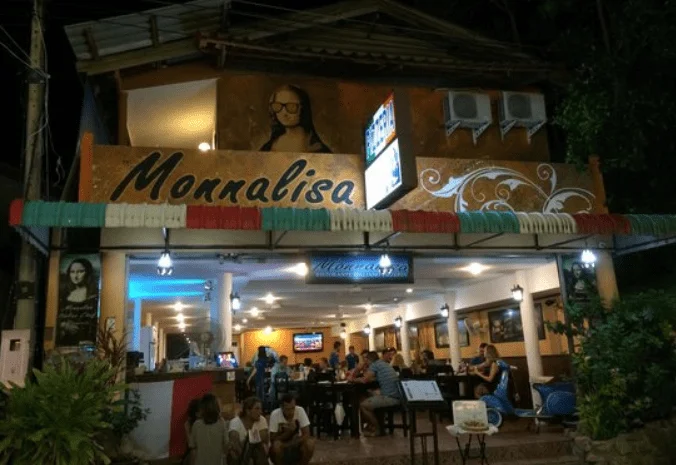
7. The Italian name for the painting is “La Gioconda”
As you might have expected by now, the Mona Lisa is the international name given to the painting. The Italian name is “La Gioconda” and has a double meaning.
La Gioconda means “happy” or “jovial” in Italian. This refers to the fact that the painting was commissioned for a celebration. Secondly, “La Gioconda” is a reference to the name of the lady, the female version of her last name by marriage, “del Giocondo.”
An equally interesting fact is that the French name is quite the same. In French, the painting is called “La Joconde.”
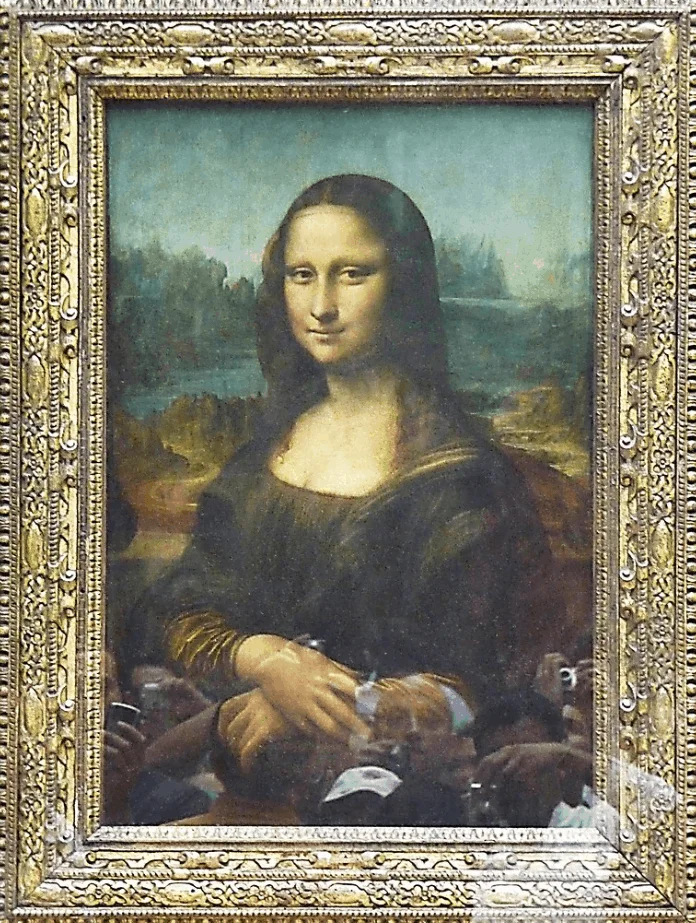
8. Before the discovery, a lot of theories floated around
Since 2005, few people still believe any of these theories, and some were indeed a bit farfetched. Regardless, without concrete evidence such as the note that confirms Leonardo da Vinci was working on a portrait of Lisa del Giocondo (which subsequently confirmed all the later mentions), all theories remained possible.
Some of these included:
- The portrait was one of 4 other women mentioned by Vasari.
- The portrait was either Isabella of Aragon, Cecilia Gallerani, Costanza d’Avalos, Duchess of Francavilla, Isabella d’Este, Pacifica Brandano or Brandino, Isabela Gualanda, Caterina Sforza, or Bianca Giovanna Sforza.
- The woman was Salaì, an Italian artist and pupil of Leonardo da Vinci from 1490 to 1518.
- The portrait was of Leonardo da Vinci himself.
Regardless of these theories, the concrete evidence that exists today has just about all historians confirm that the portrait is indeed that of Lisa del Giocondo.
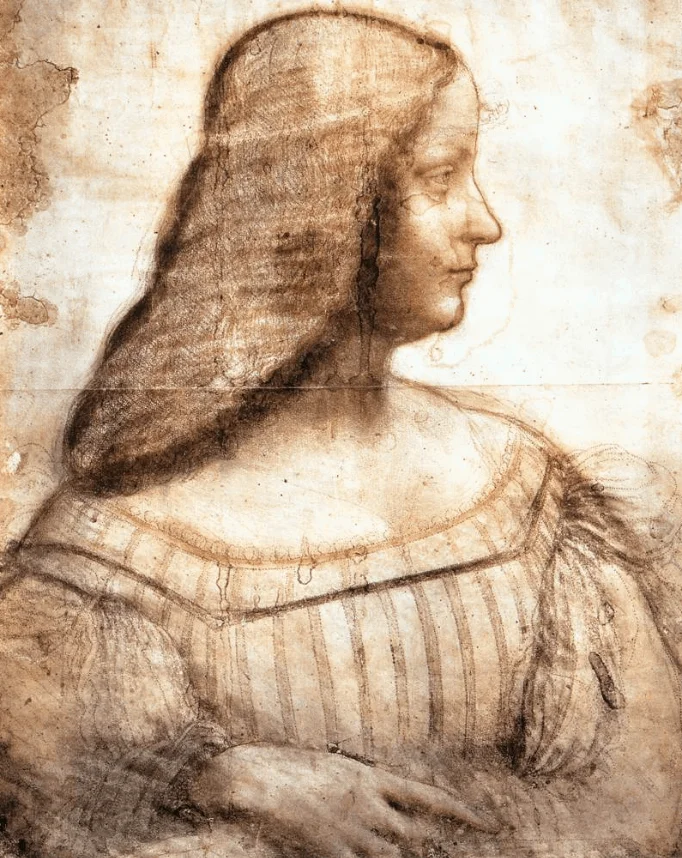
9. Was the Mona Lisa left unfinished?
One of the most interesting facts about the Mona Lisa painting is that, regardless of its enormous fame, it’s possible it’s still an unfinished work.
Two Italian medical doctors reconstructed ancient sources to create a study about the painter’s health. The study reveals that Leonardo da Vinci might have suffered from a stroke around 1517. This led him to be paralyzed, which would have made it impossible to finish the Mona Lisa before his death in 1519.
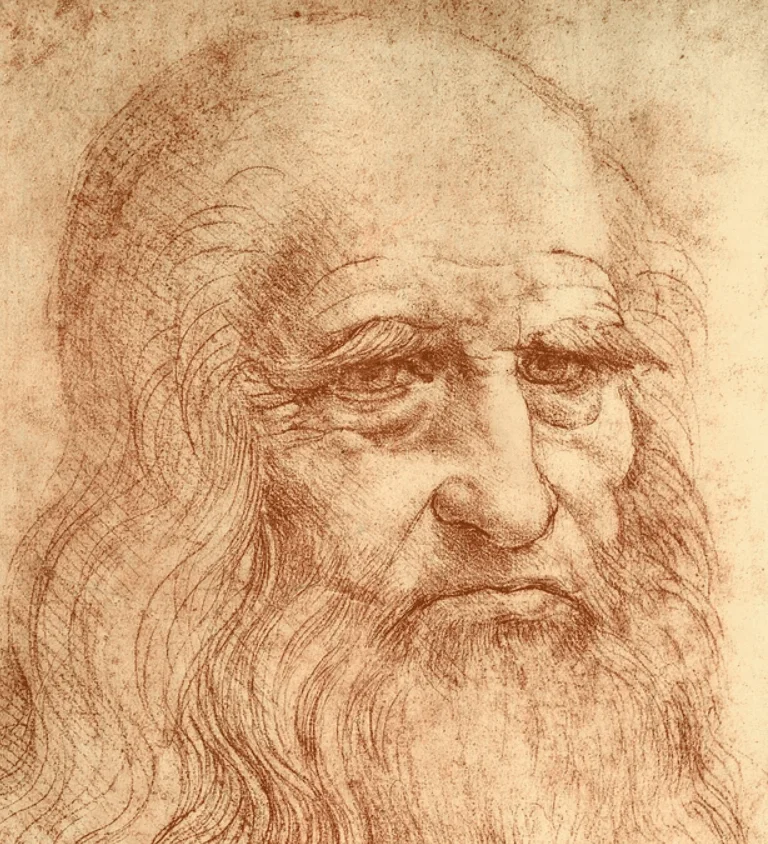
10. Did something else cause his paralysis?
Another study, based on a portrait of the famous painter, paints another picture as to why he might have left the Mona Lisa unfinished.
The study concludes that he didn’t suffer from a stroke, but might have fainted and/or fallen down and caused a condition called “ulnar paly,” also sometimes referred to as “claw hand.” This would explain why he was unable to paint in the final years of his life.
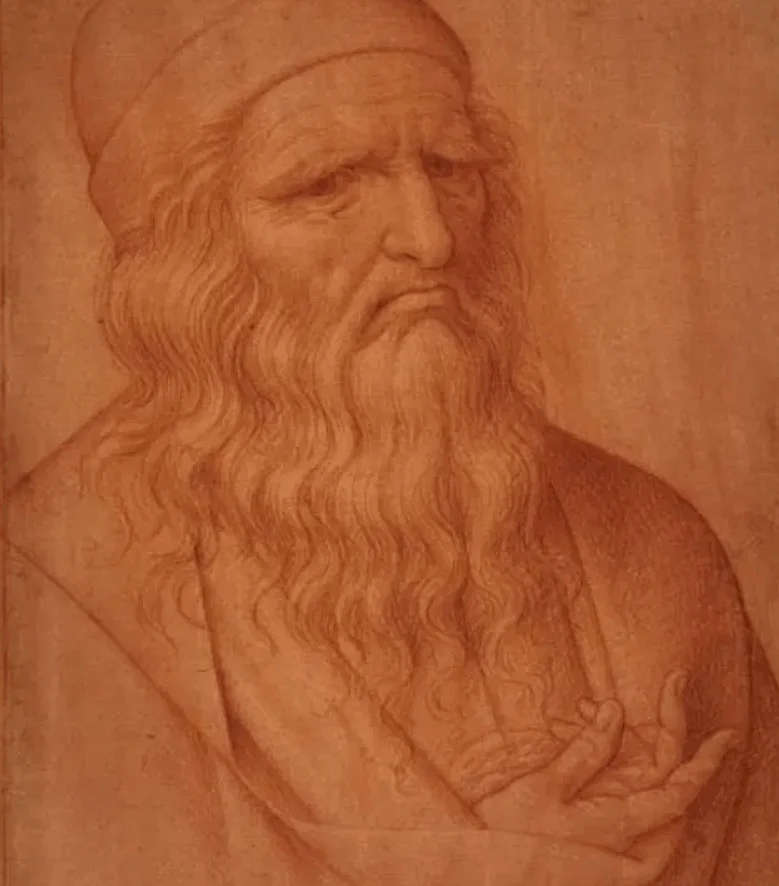
11. When was the Mona Lisa created?
For the paralysis or claw hand theory to be correct, it means that the Mona Lisa should have been painted for well over a decade. After all, the scribble in the book that provides evidence of the identity of the Mona Lisa is dated October 1503.
One quote from Vasari sheds some light on the mystery: “after he had lingered over it four years, he left it unfinished.”
Was Leonardo da Vinci so preoccupied to create the ultimate masterpiece that it simply took so long to paint? It appears to be the case.
12. Raphael created a sketch of the famous painting
While this is merely an opinion and doesn’t prove anything, da Vinci experts such as Carlo Pedretti and Alessandro Vezzosi conclude that the style in which the painting was created is characteristic for the final years of his life, post-1513.
There is however more proof that da Vinci started the work way earlier. One of his colleagues of the High Renaissance, Raphael, created a pen-and-ink sketch of what is universally believed to be the Mona Lisa. This sketch was made around 1505.
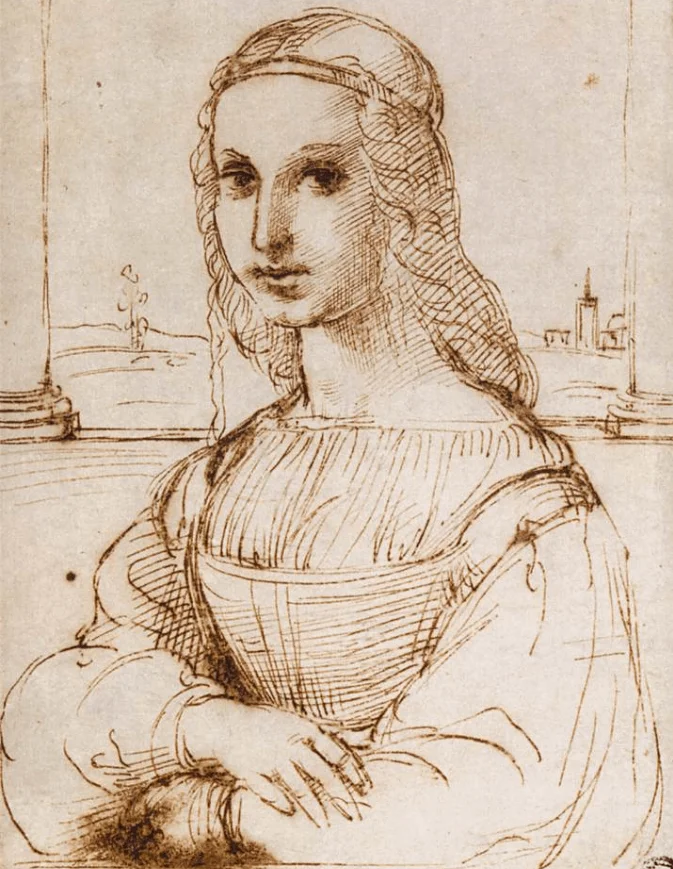
13. How did the Mona Lisa end up in France?
The website of the Louvre states that the painting was started in 1503, but leaves the question open as to how long it took for it to be completed, or if it was ever completed at all.
In 1516, Leonardo was invited by King Francis I to work at the Clos Lucé near the Château d’Amboise. One of the most plausible explanations as to how it ended up in France, is that Leonardo da Vinci didn’t finish it in time and took it with him. After his death, the painting ended up in the collection of King Francis I.
In 1517, he showed 3 portraits to Cardinal Louis of Aragon on his visit, one of which was of a Florentine lady which is believed to be the Mona Lisa.

14. The Mona Lisa became Royal French property
How the painting ended up in France, even though there is no absolute confirmation, appears to be logical. What happened afterward isn’t verifiable.
What is commonly believed is that Leonardo da Vinci’s pupil, Salaì, inherited the painting after his death and sold it to King Francis I. It then ended up in the Palace of Fontainebleau, one of the residences of the French monarchs.
King Francis, I wasn’t able to get a bargain, it’s been noted that he paid a stunning 12,000 Francs for the painting, which is the equivalent of almost $10 million today!

15. It ended up in the most amazing golden cage in the world
If you think that the castle above is special, then you better think again. When Louis XIV laid his eyes upon the Mona Lisa, he brought it to the most amazing palace of them all.
From the Palace of Fontainebleau, it was moved to the Palace of Versailles by King Louis XIV where it stayed until the French Revolution. After the fall of Louis XVI and Marie Antoinette, it was moved yet again.

16. Napoleon Bonaparte was captivated by “Madame Lisa”
When Napoleon launched his successful coup d’état which turned France into the “French Consulate” (and eventually into a dictatorship), he was pretty impressed with the Mona Lisa.
So much that he even ordered it to be hung on the wall of his bedroom in the Tuileries Palace in the center of Paris to “admire it” even at night.
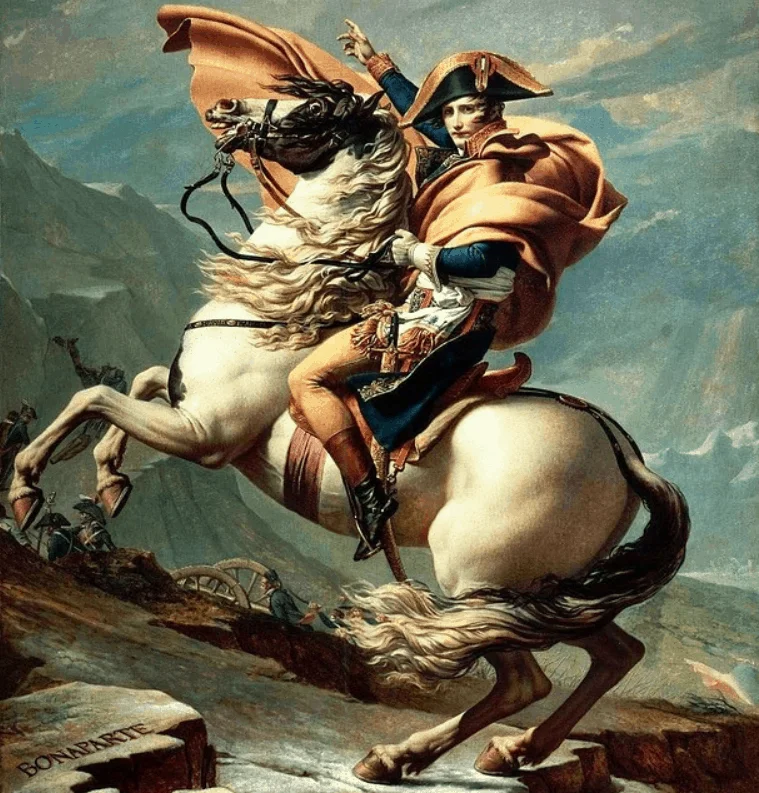
17. A very remarkable love story enfolded for Napoleon
The Mona Lisa must have captivated Napoleon so much that he fell in love with a lady who had a striking resemblance to Lisa del Giocondo.
In fact, her name was Teresa Guadagni, and believe it or not, was a descendant of the real Lisa! Could it be Napoleon specifically sought after this woman?
18. The Mona Lisa was moved to its current location
Eventually, Napoleon agreed to have the painting moved to the Louvre Museum, the place where the painting is still located at the moment.
This means that since 1804, the Mona Lisa went on permanent display in the Louvre Museum.
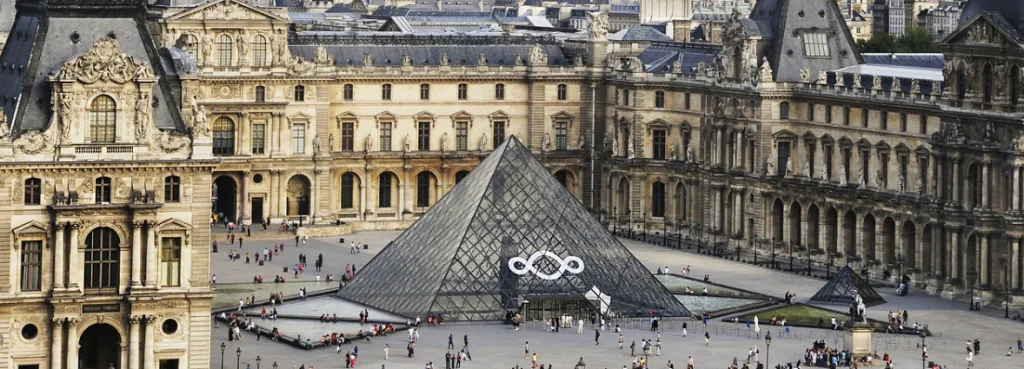
19. The Mona Lisa was briefly moved in 1870
The Mona Lisa was on public view for the first time since its creation, and it was instantly one of the most popular attractions at the Louvre Museum for the French art intelligentsia. The mysterious smile and illusionary setting gave the romantics of the time enough questions to ponder about.
That’s why it was of utmost importance that the painting remained well-protected, especially in times of war. When the Franco-Prussian War broke out in 1870, it was therefore moved from the Louvre to the “Brest Arsenal,” a heavily protected military facility near the city of Brest.
It returned to the Louvre Museum at the end of the conflict in 1871.
20. The Mona Lisa was stolen in 1911
It was a wonderful summer morning that August 21, 1911. The beginning of a new week, a bit hungover, but ready to get things rolling.
It was a great surprise to French painter Louis Béroud that the Mona Lisa wasn’t in its usual location, so without being instantly alarmed, he wondered where the photographs of it were being taken.
Amazingly enough, there were indeed photographs being taken on the roof of the Louvre as cameras in that time worked better outside. Feeling a bit more at ease now, he ordered a guard to ask the photographers when the Mona Lisa would be returned.
Then the message came. “They don’t have the Mona Lisa!” The conclusion was made a few seconds later: “It’s been stolen!“

21. The security of the Louvre was abysmal
At the time in the early 20th century, the security at the Louvre was simply a joke. There were merely 150 guards to protect over 250,000 pieces of art.
On top of that, none of the artworks were protected inside the museum as well. they weren’t bolted to the walls and the Mona Lisa, for example, hung on the wall with 4 simple hooks.
To expose the weak security system, one French reporter spent the night in a sarcophagus in the Louvre as a way to prove this fact.
21. Pablo Picasso was a suspect
A young man came forward as the thief just a week after the Mona Lisa had been stolen. He was able to prove he was able to steal pieces of art from the Louvre and mentioned he sold them to a “painter-friend.”
The friend appeared to have been nobody less than Pablo Picasso, one of the most famous painters in the world, who soon found himself in a jailhouse being questioned by the French police.
When it became clear that Picasso and the friend who gave him up didn’t have anything to do with the heist, the case was dismissed and both men were set free.
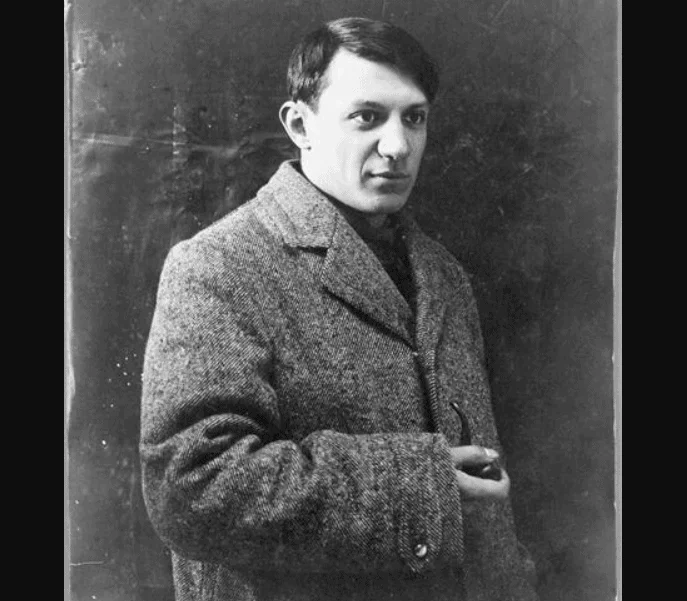
22. The theft made the Mona Lisa world-famous
While the Mona Lisa had been described as the ultimate masterpiece of the high Renaissance since the mid19th century and was being worshipped by the French art intelligentsia, it’s true that the Mona Lisa didn’t have the same status as it has today.
Part of this hysteria has to do with the reaction of the French authorities to the heist, and the media coverage that spread across the world.
The Mona Lisa had become world-famous, literally overnight!
23. The real thief was caught 28 months later
Unsurprisingly, the real thief was somebody who knew the ins and outs of the Louvre museum. His name was Vincenzo Perugia and he had been working as a handyman, actually installing the glass cases that were protecting the painting.
He got help from two brothers, Vincenzo and Michele Lancelotti. He was hoping to sell the painting.
When he finally did and tried to sell the painting to a Florentine art dealer, he found himself surrounded by police less than half an hour later.
His excuse: He felt like Napoleon had stolen the painting and wanted to bring it back home, to Italy.
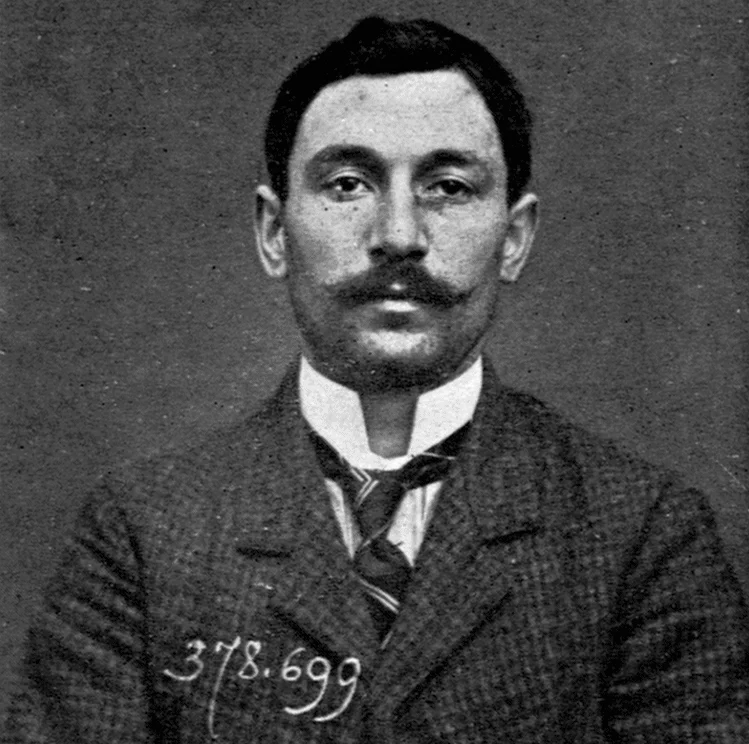
24. Vicenzo Perugia succeeded in his efforts
In a remarkable turn of events, Vicenzo Perugia actually indirectly succeeded in his effort to bring the Mona Lisa back to its homeland.
After the Mona Lisa was recovered from the Florentine art dealer, it was showcased all over Italy accompanied by banner headlines rejoicing its return.
It was eventually returned to the Louvre shortly after.
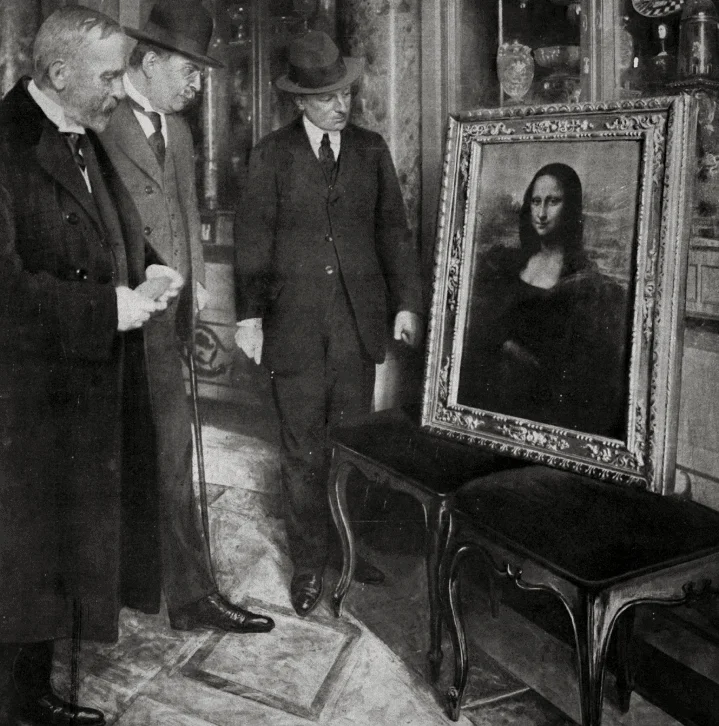
25. Was Perugia paid by a scammer?
Years after Perugia had stolen the Mona Lisa and it was returned safely to the Louvre Museum, a man confessed that he was the mastermind of the heist.
He called himself the Marquis of the Vale of Hell and said he paid Perugia and his two accomplices a lot of money to steal the painting.
His motivation? If the real Mona Lisa was stolen, he could sell copies on the black market to rich collectors who each would believe they were buying the real Mona Lisa.
His confession was never confirmed and we have to believe him on his word that this is a true story.
26. The Mona Lisa is a rather small painting
The size of the painting is rather small compared to other world-famous works of art. It measures 77 cm × 53 cm (30 in × 21 in).

27. Does the Mona Lisa have eyebrows?
A lot of theories regarding the eyebrows of Lisa del Giocondo have surfaced. Some indicated that it’s simply the style of Italian women during this period, some claimed that it’s proof that the Mona Lisa is an unfinished work of art.
Parisian engineer Pascal Cotte claims to have the answer, and it’s a rather simple one. his 3,000 hours of research has allowed him to go back in time and see how the Mona Lisa looked the moment it was painted.
His findings show that the Mona Lisa did indeed have eyebrows, but that they have faded over time or have disappeared because of sloppy restoration work.
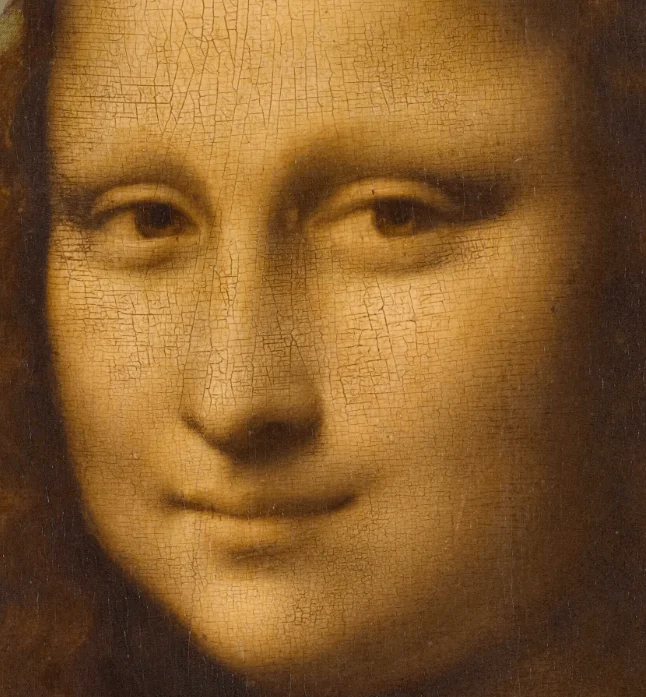
28. Da Vinci possibly created the world’s first 3D image
There are many copies of the Mona Lisa painting around. One of the most famous is the copy which is on public display in the Prado Museum in Madrid.
Research has shown that it most possibly was created by one of Da Vinci’s pupils, at the exact same time as the real Mona Lisa was painted. This has been asserted because changes in the paintings were made in exactly the same way.
To make the story even more astounding, if you put the two paintings together, they give the effect of a 3D image.
Does this mean that Da Vinci created a stereoscopic image, 330 years before the first stereoscope was invented? See the effect in action below by putting on some 3D glasses!
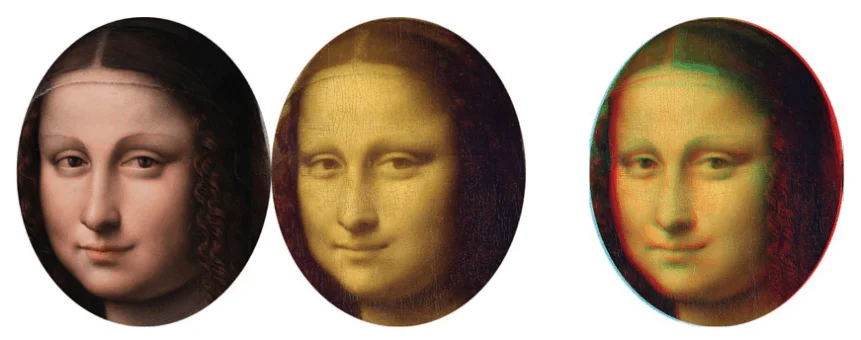
29. The Mona Lisa is one of the most valuable paintings in the world
Apart from being the most popular and most valuable paintings in museums today, it also holds a peculiar record.
At the moment, the Mona Lisa still holds the Guinness World Record for having the highest known insurance valuation in history at $100 million USD in 1962. That’s the equivalent of over $850 million USD today if we calculate inflation.
No wonder that the painting is now housed in a secure location behind bulletproof glass.
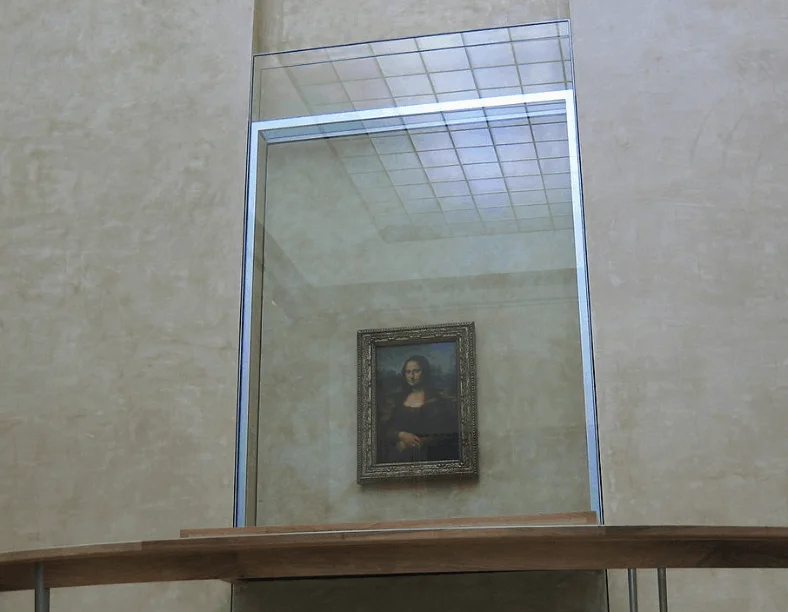
30. The Nazis didn’t get their hands on the Mona Lisa
The Nazis were notorious art collectors (meaning thieves), so it was the Louvre’s and the French Nation’s biggest fear that the events of 1911 would repeat themselves during World War II.
It was first moved to the Château d’Amboise, then to the Loc-Dieu Abbey and Château de Chambord, then finally to the Ingres Museum in Montauban, just to keep it out of the hands of evil.
31. The Mona Lisa has been attacked multiple times
In December 1956, a Bolivian tourist named Ugo Ungaza Villegas threw a rock at the Mona Lisa in the Louvre which shattered the glass that was protecting it. The painting was slightly damaged as a piece of glass damaged a speck of pigment near the left elbow.
A few years earlier, a lunatic who claimed to be in love with the painting cut it with a razor blade in an attempt to steal it.
In 1974, while the painting was on display in Tokyo, a woman sprayed it with red paint as a protest against that museum’s failure to provide access for disabled people.
Finally, on August 2, 2009, a Russian woman that was denied French citizenship threw a teacup towards the glass, effectively breaking the teacup but doing nothing to the painting and even the bulletproof glass itself.
If you’re interested in art vandalism and want to know what inspires these deranged people, here’s a nice list of incidents involving other works of art.
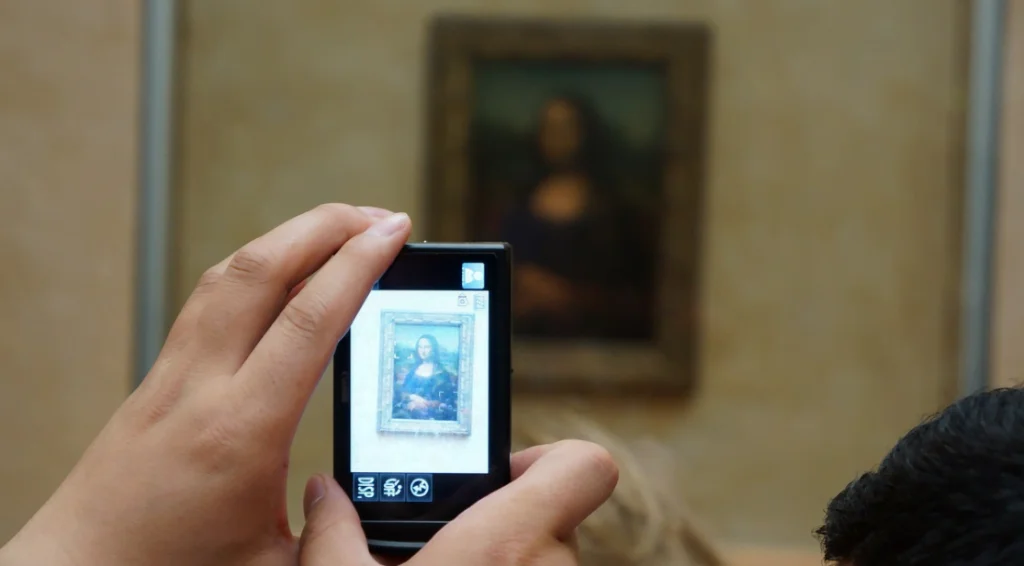
32. The Mona Lisa met the Kennedy’s in Washington D.C.
From December 1962 until March 1963, the Mona Lisa was the guest of honor in Washington D.C. and New York, where it was on display in the National Gallery of Art and the Metropolitan Museum of Art respectively.
Over 1.7 million people visited the museums to get a glimpse of the painting, including the US President ad the time, John F. Kennedy, and his wife Jackie!
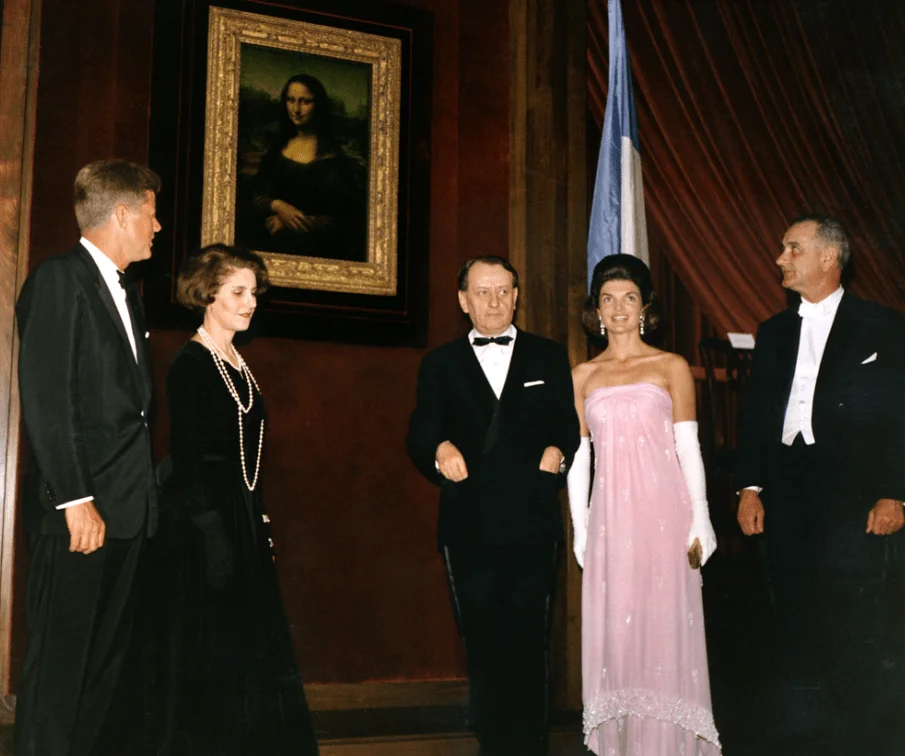
33. The smile of the Mona Lisa carries a secret
The enigmatic smile of the Mona Lisa has fascinated people since the painting was created. One thing we can’t seem to grasp is why the smile of the Mona Lisa seems to disappear when we directly look at it.
Professor Margaret Livingstone of Harvard University claims to have the answer and is pretty straightforward.
The smile disappears when we look at it because of the way that the human eye processes visual information. It uses two different types of vision, foveal and peripheral. So her answer to the question is:
“The elusive quality of the Mona Lisa’s smile can be explained by the fact that her smile is almost entirely in low spatial frequencies, and so is seen best by your peripheral vision.”
Because shadows aren’t picked up by direct vision, the smile appears when you look away from it. Pretty interesting!

34. Plan to visit the Mona Lisa?
Then you’re in luck! Since 2019, the setup to get a glimpse of the Mona Lisa has drastically improved.
before it was very likely that during holidays you would have to wait for hours on end to get a glimpse of the famous work of art. So the Louvre decided to make a change and integrated queues to move the “traffic” of eager tourists faster.
The downside? Even though you won’t have to wait for hours, you will only get to see the most famous painting in the world for 30 seconds.
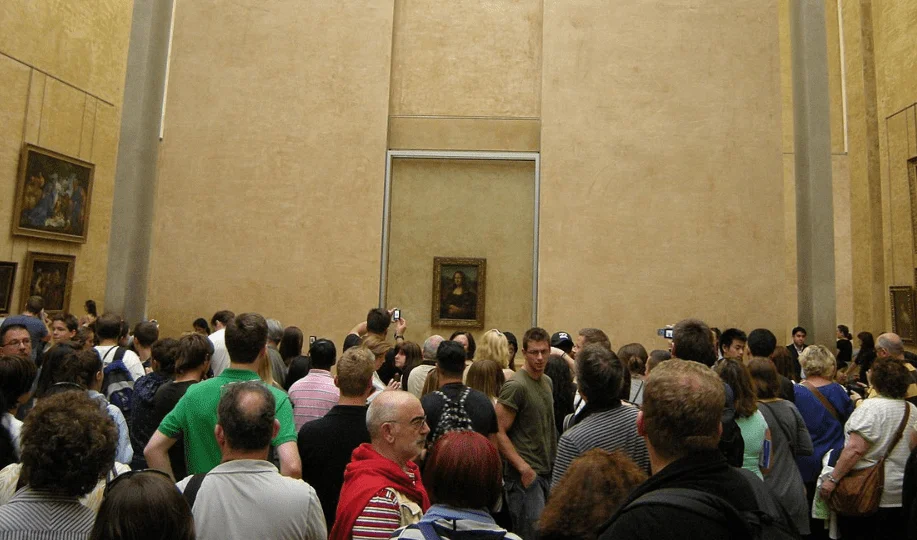
35. The Mona Lisa has a lot of fans
Over 10 million people visit the Louvre every year, making it the biggest museum in the world. The museum has thousands of pieces of art from all over the world on display.
Regardless, the former director of the Louvre Henri Loyrette claims that about 80% of all these visitors are only interested in seeing the Mona Lisa.
It’s no wonder there are immense queues right?
36. The Mona Lisa will remain where it is, indefinitely
One journalist of France24 asked the question of whether or not the Mona Lisa could be sold in order to clear part of the immense debt that France currently has.
The answer to the question is simple: No.
Why?
Because in the law of France, it’s illegal to sell it.
What does this mean for the Mona Lisa painting?
It will remain on public display in the Louvre Museum forever (or until this law would be changed, which is very unlikely).
